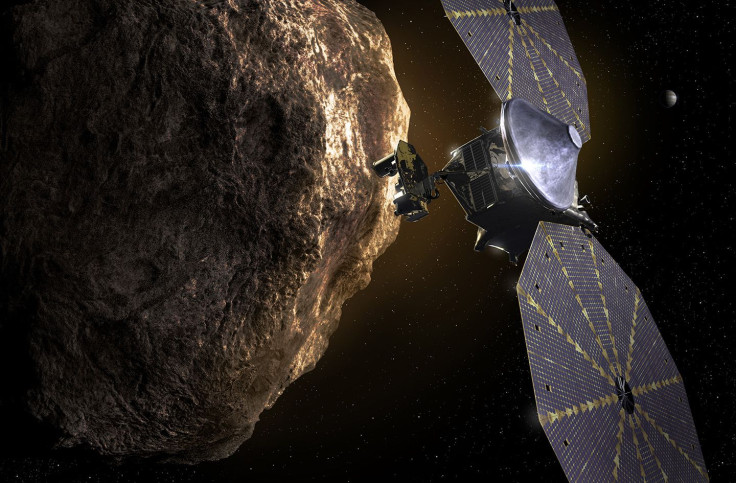NASA's Lucy Spacecraft Passes Close To Earth; Here's Why It's Important [Video]
KEY POINTS
- NASA's Lucy passed 220 miles above the Earth's atmosphere Sunday morning
- The event was visible from certain areas in the U.S.
- It's on its way to visit Jupiter's Trojan asteroids
NASA's Lucy spacecraft swept close to Earth on the first anniversary of its launch, and it was even seen from the ground. It was the spacecraft's first gravity assist on its way to an important mission.
The Lucy spacecraft successfully passed just 220 miles (350 kilometers) above the Earth's atmosphere Sunday morning, NASA confirmed. According to the agency, this was actually "very close" to Earth, even closer than the International Space Station.
It was expected to first be visible from the ground around Western Australia, followed by the Pacific Ocean and then the Western United States by 7:26 a.m. EDT. Sure enough, Lucy was visible from California, with the agency sharing a long-exposure image of the Lucy Mission from Southern California.
In the image NASA shared on Twitter, the Lucy spacecraft "appears as a streak of light near the top of the image," while a meteor also happens to make an appearance, albeit fainter, on its left side.
Hi there, #LucyMission! In this long exposure from Southern California, the passing Lucy spacecraft appears as a streak of light near the top of the image. To the left, a meteor makes a fainter streak as it happens to enter the atmosphere in the same moment. #WaveToLucy pic.twitter.com/428RKPZI17
— NASA Solar System (@NASASolarSystem) October 16, 2022
Members of the Lucy team also caught a glimpse of the pass using a telescope, capturing it as it streaked through the skies over Nebraska.
"The Lucy Team in Boulder and Littleton, Colorado, were stuck with overcast skies, but two intrepid team members made a roadtrip to Scottsbluff, Nebraska and spotted Lucy with a telescope and shared what they saw," according to the Lucy Mission Twitter account.
#SpotTheSpacecraft update: The Lucy Team in Boulder and Littleton, Colorado were stuck with overcast skies, but two intrepid team members made a roadtrip to Scottsbluff, Nebraska and spotted Lucy with a telescope and shared what they saw. Whoot! #LucyMission#EarthGravityAssist pic.twitter.com/8LYhFBNdqp
— Lucy Mission (@LucyMission) October 16, 2022
Another photo also shows the spacecraft as a bright blip in the dark skies.
Good to see you Lucy! #SpotTheSpacecraft pic.twitter.com/TisNwxLYwN
— Lucy Mission (@LucyMission) October 16, 2022
But why is this close pass so important?
It was not just a rather sentimental visit to the planet a year after its launch, but it was actually the first of Lucy's three gravity-assist maneuvers.
Essentially, Lucy will be using Earth to "sling-shot" its way to Jupiter's Trojan asteroids, which NASA noted to have never been visited before.
The Sunday pass brought it to a new trajectory on its 12-year mission to its target. After its second gravity assist a few years later, Lucy will pass six of the Trojan asteroids and then come back to Earth for its third gravity assist in December 2030.
These Trojan asteroids may hold clues about the formation of our solar system, according to NASA. As mysterious as they are, however, they've only ever been studied from Earth. But with the Lucy mission, scientists will finally be able to have a look at them from up close.

© Copyright IBTimes 2025. All rights reserved.






















